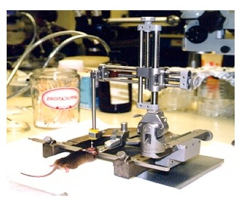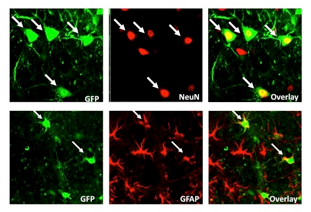Targeted viral delivery of genes to specific cardiovascular circuits in mouse brain
- One of the cornerstones of our research program is the ability to target specific gene modifications to central cardiovascular nuclei in a spatially and temporally controlled manner using somatic gene transfer. This is important since specific promoters have not been identified that could be used to drive transgenes selectively to these regions.
- Using different viral vectors encoding reporter genes, we established the feasibility of selectively restricting gene transfer to specific cardiovascular nuclei and showed that various vectors differ markedly with regard to cell-type specificity, stability and local vs. distant infectivity in these neural axes. For example, feline immunodeficiency virus (FIV) and adeno-associated virus (AAV-2) target gene expression selectively to neurons and in tissue only at the primary injection site. On the other hand, adenovirus transduces both neurons and glial cells and could be used to target distant subpopulations of neurons through retrograde transport.
- This information has allowed us to capitalize on the unique properties of these and other viral vectors in order to tailor the gene delivery strategy depending on specific gene expression patterns and physiological questions at hand.

Stereotaxic setup for site-selective gene transfer into mouse brain.

Adenovirus transfects both neurons and glia in the RVLM.


